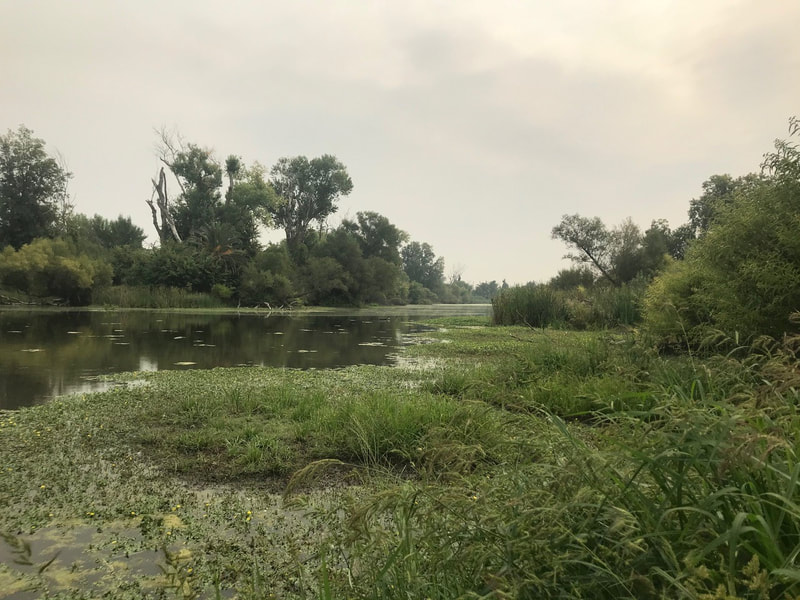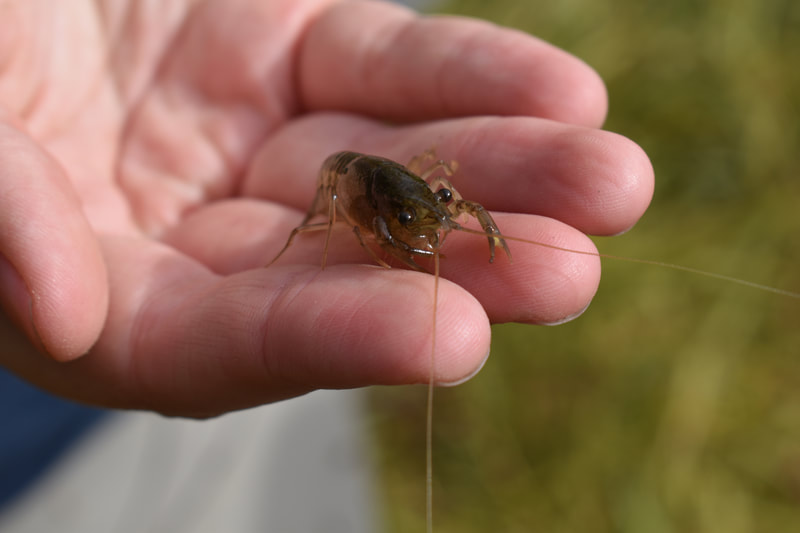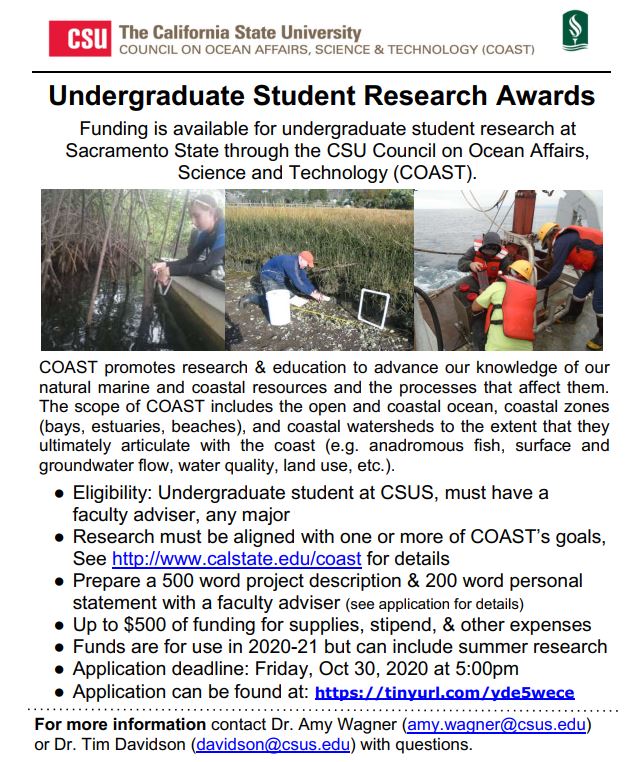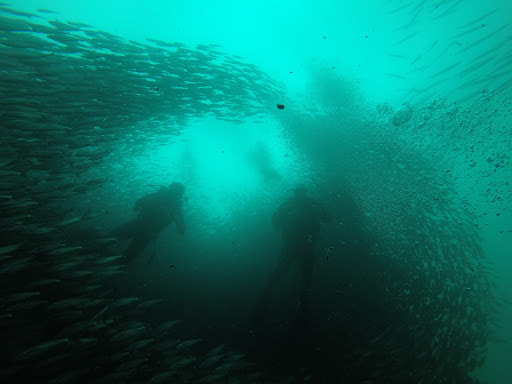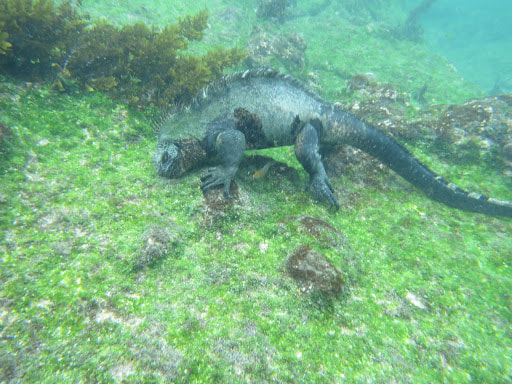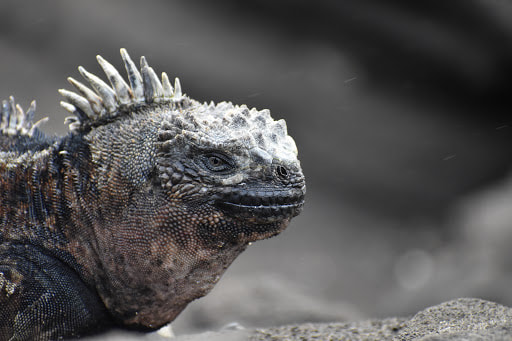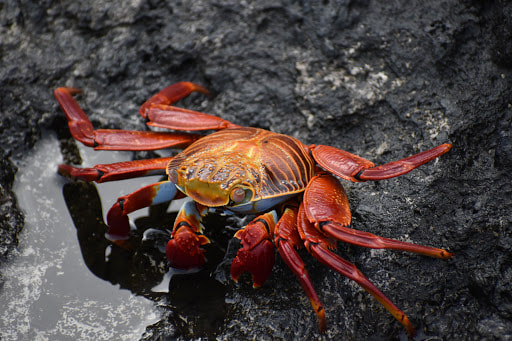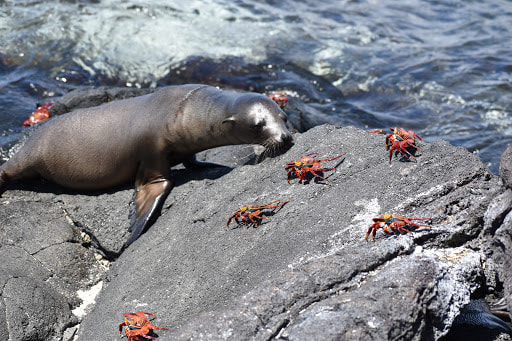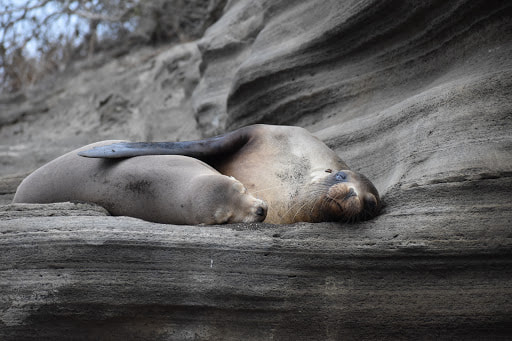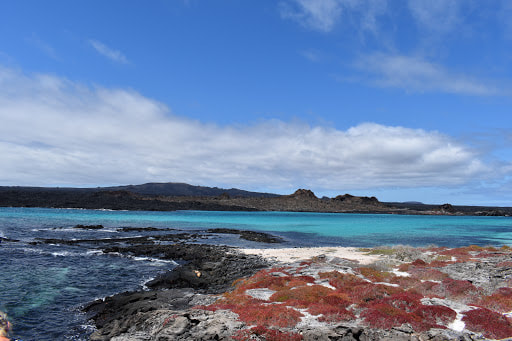|
New papers!
I am happy to report that I recently published a paper exploring the enemy release hypothesis (ERH) in Hawaii mangroves. This study explores the ERH by focusing on enemy damage in leaves and provides additional evidence that invasive Hawaii mangroves may be experiencing an escape from enemy damage. Davidson TM, Torchin ME Smith CM (2023) Introduced mangroves exhibit less leaf damage and greater performance than native mangroves. Biol Invasions 25, 3503–3515 In addition, I'm happy to report a new paper led by former Kneitel lab MS student Sean O'Brien was just published in Restoration Ecology. This was an exciting study investigating how vernal pool invertebrate abundance, diversity, and composition varied between natural vernal pools and restored vernal pools. For details see below: O'Brien SM*, Helm BP, Davidson TM, Kneitel JM (2023) Invertebrate community composition differs between restored and natural vernal pools. Restor Ecol: e14080 Research update: I'm excited to be gearing up for the spring field season (and continue to work on papers!). I will collaborating with some new students and my former student Ethan Roberts to explore how burrows of the invasive isopod Sphaeroma may reduce environmental stressors for other invertebrates. Ethan's lab studies told a clear story, but these follow up field studies should also help use understand how burrows affect native biota in a natural field setting. 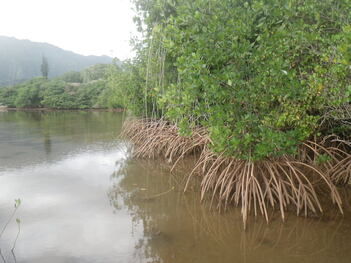 Davidson recently published a new paper in the journal Ecology titled "Introduced mangroves escape damage from marine and terrestrial enemies." In their native range, red mangroves are key habitat-creating foundation species and provide numerous ecosystem services. However, introduced red mangroves in Hawaii completely transform native beaches, lagoons, and other habitats into dense mangrove forests. These transformations alter native biodiversity, ecosystem function, and even threaten Native Hawaiian fishponds. Introduced mangroves also appear extremely dense and productive in Hawaii and earlier work suggests few enemies appear to prey on mangroves. The enemy release hypothesis suggests that some invaders may become more "successful" (e.g., productive and fecund) in an invaded location if they are introduced without their natural enemies. In this study, Davidson, Mark Torchin (STRI Panama), and Celia Smith (University of Hawaii at Manoa) investigated the enemy release hypothesis using red mangroves (Rhizophora mangle) as a model system. Specifically, they compared the prevalence of herbivores and herbivory damage between 8-10 introduced (Hawaii) and native mangrove sites (Florida, Belize, Panama). They found 10 times less damage and far fewer enemies in introduced mangroves than native mangroves, in support of the enemy release hypothesis. These results were consistent across several mangrove structures (roots, leaves, propagules, etc.) and between different types and functional groups of enemies (marine vs. terrestrial; herbivores, pathogens, etc.). You can read more about the study here. Davidson TM, Smith CM, Torchin ME (2022). Introduced mangroves escape damage from marine and terrestrial enemies. Ecology: e3604. Sarah Albright (MS student at CSUS), Dr. Andrew Sellers (STRI Panama), and Davidson just published an Invasion Note investigating potential biotic resistance by native herbivores on an invasive tropical alga.
This work is a follow up to Sellers, Saltonstall, and Davidson's earlier work in Bocas del Toro Panama. Previously, we observed large abundances of the invasive Kappaphycus alvarezii escaping two abandoned farms. The alga occurred in very high cover in some areas and even started overgrowing coral reef and smothering seagrass beds. However, we also observed several herbivores, such as native urchins, feeding on the alga. In this study we explored the effect of native herbivores using an herbivore exclusion experiment and a short lab experiment. Our results suggest native herbivores may help reduce abundances of escaping algae. However, we hope to better explore the role of native herbivores as biotic resistance to Kappaphycus with a larger future experiment. You can read more about the study here. Albright, S.L., Sellers, A.J. & Davidson, T.M. Native urchins as potential agents of biotic resistance to the introduced alga Kappaphycus alvarezii in a tropical lagoon. Biol Invasions (2021). https://doi.org/10.1007/s10530-021-02651-z I am very proud to announce that Carla Cruz Medina was awarded the prestigious CSU Trustees Award. Carla is a 2nd year MS student at Sac State and has been a key member of the Bushy Lake Restoration project led by Dr. Michelle Stevens. Her thesis will investigate the ecological impacts of the invasive red swamp crayfish Procambarus clarkii. Please read more about Carla's story below.
www.calstate.edu/impact-of-the-csu/support-the-csu/csu-trustees-awards/meet-the-awardees/Pages/sac-carla-cruz-medina.aspx www.csus.edu/news/newsroom/stories/2021/9/trustees-award-cruz-medina.html Congrats Carla! I'm pleased to announce the publication of a new collaborative paper in PLOS One: Lee et al. (2021) Variable host responses mediate host preference in marine flatworm−snail symbioses (Link). In this paper, we investigated how the effects of a symbiotic marine flatworm vary amongst different tropical snail hosts in Panama. We found that the impacts of flatworms can vary from negative to neutral (or even possibly slightly positive) depending on snail host species. Likewise, we found snails that tended to be more negatively affected by flatworms also exhibited a more vigorous rejection response during worm inoculations. This work was initially conducted while [the recently graduated] Dr. Lee was an undergraduate student. (Congrats to the new Dr. Lee!)
The Davidson lab is continuing to advance research, even amidst the pandemic. Sarah has nearly finalized a working flume to test how water velocity may impact algae fragmentation. Jessica continues to analyze her data investigating how wood borers altered structural complexity of woody debris. New graduate students Rebecca and Carla are hard at work researching ideas for their projects. Carla, members of the Kneitel lab, and I are also continuing to sample for aquatic invertebrates and invasive species through the Bushy Lake Restoration Project (pics below). While we suffered a few puncture holes in the inflatable kayak on our most recent trip, we were still able to finish the sampling before the kayak sank. Nothing like some frigid lake water to wake you up on an early Sunday morning. Finally, Cass (with help from Catlinh) are continuing to conduct a meta-analysis to better understand the varying impacts of invasive nutria (a burrowing aquatic rodent). Sacramento State students --- please see the flyer below for information on our COAST undergraduate research program! You can earn up to $500 towards a marine/watershed research project in collaboration with a faculty mentor. Due: Oct 31, 2020. PDF copy of this flyer:
Members of the Davidson Lab are collaborating with an interdisciplinary team of scientists from Sacramento State and other organizations (led by Dr. Michelle Stevens, Environmental Studies) to help develop a restoration plan for Bushy Lake. Bushy Lake is a small urban-influenced lake off the American River Parkway in Sacramento. While this lake suffers from urban-related disturbances (water quality, invasive species, debris), a wide variety of wildlife use this urban lake as habitat (see pictures below from Dr. Jamie Kneitel). Thus, this site has the potential of becoming a key refuge for threatened native species, such as western pond turtles and various waterfowl. The Davidson and Kneitel Labs at Sacramento State are currently conducting preliminary sampling to assess the abundances of invasive and native aquatic invertebrates. Once we finalize our sampling and survey design, we will conduct longer term sampling to better characterize the aquatic community and food web dynamics over time. Ultimately, this information will help us understand the aquatic food web at Bushy Lake and determine what additional control or management options may be necessary to restore this lake for native species. For more information see the Bushy Lake Restoration project website. Images above provided by Dr. Jamie Kneitel
Updates: Despite the global pandemic, the Davidson lab moves forward with what research can be done from the safe confines of our homes and computers. Sarah Albright continues to develop and test a device to measure the tensile force of different algae in her garage. By examining the tensile force, she can test the biomechanical properties of different algae species and sizes. Ultimately, we hope we can infer how algae species and size may influence fragmentation, a method that some invasive algae use to disperse and propagate. Ethan Roberts (now recently graduated!) has moved onto a job with the state where he helps to monitor and control invasive weeds. We're sad to see him go, but happy to hear of his successes. He continues to analyze and write up his research on the environmental effects of isopod burrows. Davidson has been hard at work analyzing and writing up research from his mangrove research on introduced Hawaii mangroves and project examining the biogeography of invasive shipworm borers. We're all looking forward to returning to the field next season (hopefully) when the infection risk gets low enough. Until then, we'll isolate, keep working on our computer-based projects, and keep wearing our masks.
Leaf detective: Good news: I am happy to announce a new paper published in Science Activities called "Leaf detective: using evidence of damage on mangrove leaves to measure the effects of different herbivores." In this lesson, elementary students examine real mangrove leaves (digitized) to infer which organism(s) caused the damage they observe. They practice making a scientific question, collect data, graph, and then make a conclusion based on scientific evidence. This lesson represents several years of work and testing in both Sacramento and Hawaii elementary classrooms. My Hawaii collaborators and I are happy that we can share this lesson idea with K-6 teachers. Please email me for a copy, if you do not have access through the link above. And teachers are welcome to contact me if you wish to discuss ideas on how to adapt it to an online learning environment. I hope everyone stays safe and vigilant. Wearing a mask saves lives! Congratulations to Ethan Roberts who won 2nd place at the CSUS Spring Symposium for his talk: "Burrows created by an ecosystem engineer improve survivorship of intertidal invertebrates". Congrats also to Sarah Albright, who successfully completed her Advancement to MS candidacy. Other lab members are also working diligently, such as Jessica Nichols who is analyzing mounds of field data, and Jenna Grossman who is helping Sarah with algae fragmentation studies and beginning to design her own project.
In other news, I am honored to receive the university's Outstanding Teaching Award for the college of NSM. I appreciate the support of my colleagues and students! I do love teaching as much as I love research. I am continuing to analyze data exploring how herbivory varies in introduced and native mangroves and collaborating with a Hawaii elementary school teacher and a former post doc adviser to develop curriculum for K-6 teachers using mangroves as a model system. Finally, back in January my wife and I traveled to the Galapagos Islands! It was an amazing trip and I'd recommend every biologist and nature lover to visit some time. It is one of the few places that felt pristine with a diversity of huge tree-like cactus, giant tortoises, strange tropical penguins, and an unparalleled wealth of marine life...including of course, my favorite: the beautiful Sally lightfoot crab. We have still to fully sort through over 1000 photos we took...but here are a few samples. Enjoy! 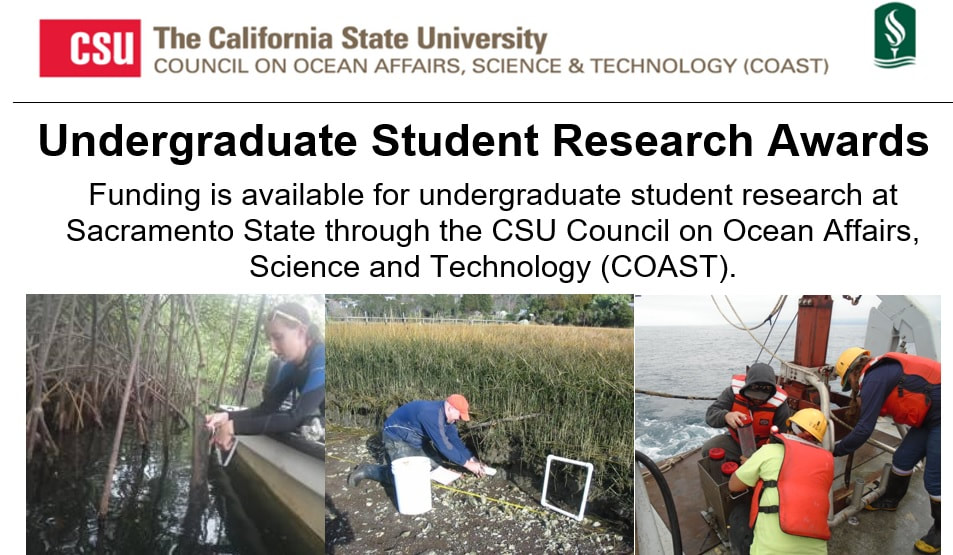 The CSU COAST Undergraduate Student Research Award program at Sacramento State is currently accepting applications! Due Friday Dec 13 at 5pm. Students can request up to $500 to cover supplies, travel, and other expenses for a research project related to marine, coastal, or coastal watershed ecosystems for 2019-20 (including summer). The application is located here. Note: you will need to find a faculty research mentor at Sac State and then write a short proposal description (<500 words) and budget justification. I recommend writing your proposal in a text editor and getting feedback from your faculty mentor before submitting via the online system. |
|||||||
Proudly powered by Weebly
